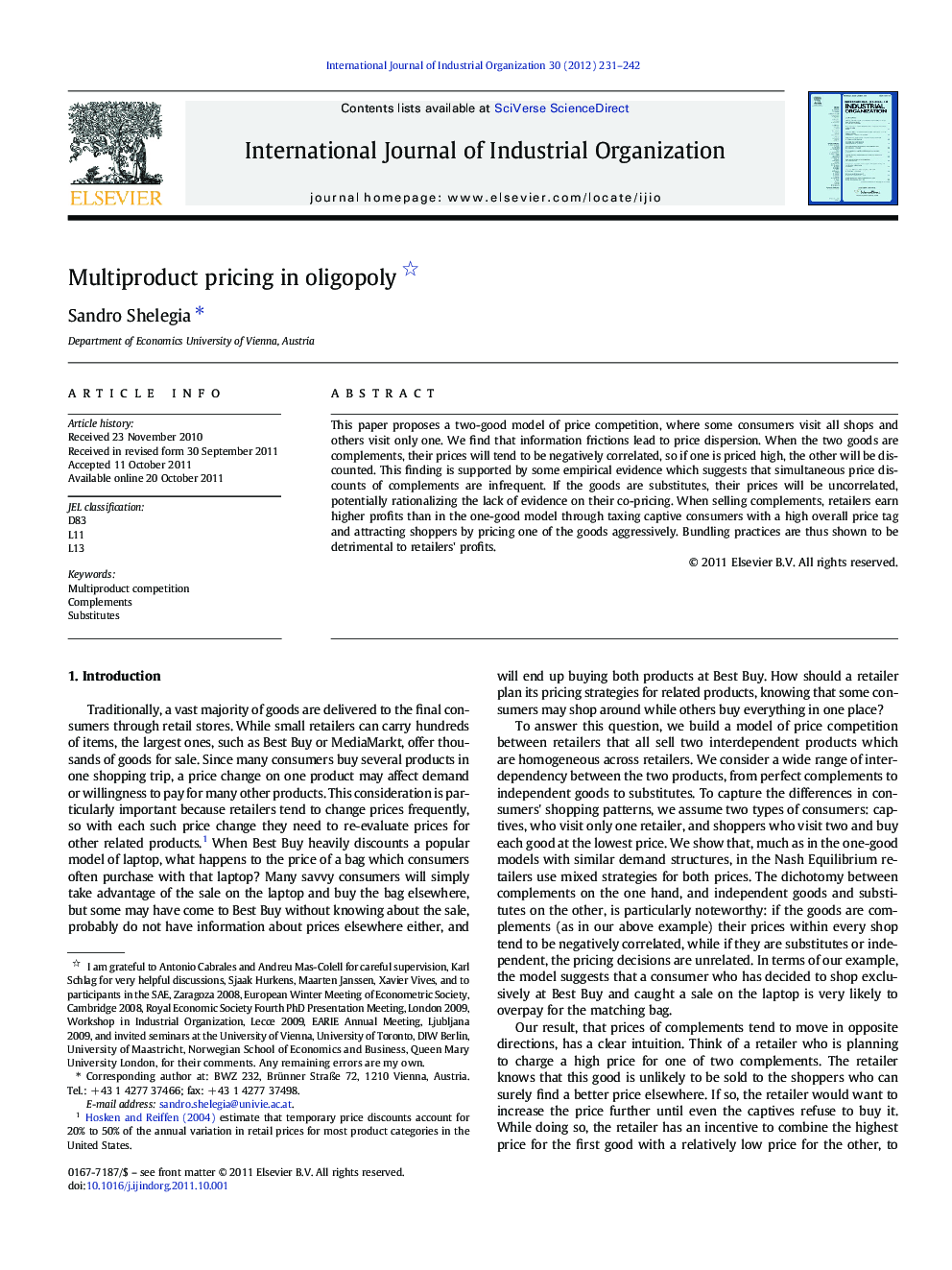| Article ID | Journal | Published Year | Pages | File Type |
|---|---|---|---|---|
| 5078350 | International Journal of Industrial Organization | 2012 | 12 Pages |
Abstract
This paper proposes a two-good model of price competition, where some consumers visit all shops and others visit only one. We find that information frictions lead to price dispersion. When the two goods are complements, their prices will tend to be negatively correlated, so if one is priced high, the other will be discounted. This finding is supported by some empirical evidence which suggests that simultaneous price discounts of complements are infrequent. If the goods are substitutes, their prices will be uncorrelated, potentially rationalizing the lack of evidence on their co-pricing. When selling complements, retailers earn higher profits than in the one-good model through taxing captive consumers with a high overall price tag and attracting shoppers by pricing one of the goods aggressively. Bundling practices are thus shown to be detrimental to retailers' profits.
Keywords
Related Topics
Social Sciences and Humanities
Economics, Econometrics and Finance
Economics and Econometrics
Authors
Sandro Shelegia,
